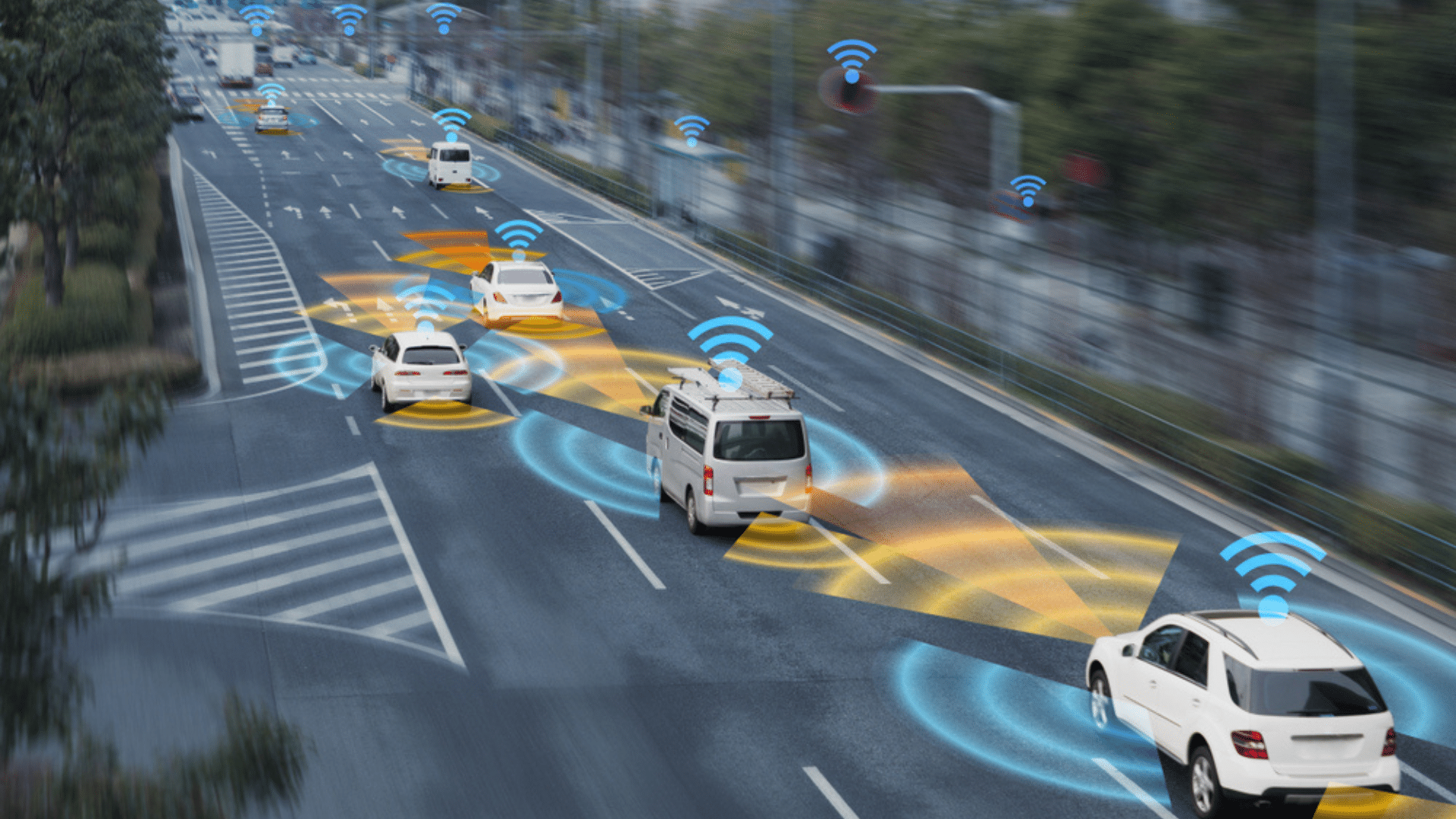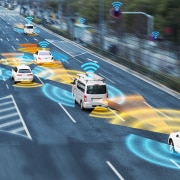Enhancing Modern Transportation: Unveiling the Benefits of V2X Communication

Introduction to V2X Communication
V2X communication uses new technologies, including DSRC and C-V2X, to connect automobiles to other vehicles, infrastructure, and people. It allows cars to exchange real-time speed, position, and possible dangers in blind corners or crossroads for road safety. V2X also improves traffic flow and mitigates congestion, integrating with urban infrastructure and traffic systems. It also manages and automates traffic systems in intelligent city frameworks. Thus, it boosts effectiveness and drops environmental effects via better mobility solutions. By 2025, experts expect 35.1 million cars to have V2X capabilities, up from 0.7 million in 2020.
Improving Road Safety with V2X
Enhancing Road Safety through V2X Communication
V2X communication allows immediate, fluid interaction between automobiles, pedestrians, and urban infrastructure to decrease road accidents. V2X exchanges speed, position, and directional intent via DSRC and C-V2X protocols. V2V interactions enable automobiles to anticipate and respond to abrupt moves by neighboring vehicles for dipped crashes. V2I capabilities incorporate traffic signal information. It allows cars to match their speeds to changing lights, which smooths traffic flow and lowers junction collisions. V2X technology might avoid a considerable percentage of non-impaired driving accidents. It shows how V2X real-time data exchange and predictive analytics promote vehicle safety and efficiency.
Case Studies Illustrating V2X Impact on Road Safety
Real-world uses of V2X communication demonstrate its road user safety benefits. A trial experiment with nearly 3,000 automobiles in Ann Arbor, Michigan, showed how V2X might enhance traffic management and lessen accidents. In this initiative, equipped automobiles communicated their speed and position at junctions while decreasing confrontations. Another example is the European C2C-CC, which has encouraged V2X implementation throughout Europe. The initiative’s intersection collision warning technology alerts drivers to potential junction collisions. Apart from that, Ford’s C-V2X deployment in Wuxi and Changsha has connected over 330,000 cars to a network that exchanges real-time traffic data for lower traffic congestion and accidents. Without a doubt, the above examples highlight how V2X technology benefits road safety with a more connected and sensitive driving environment.
Optimizing Traffic Flow and Efficiency

V2X’s Role in Intelligent Traffic Congestion Management
Active vehicle-traffic infrastructure interaction via V2X communication transforms traffic control systems. V2I communication lets cars receive traffic signals and signpost changes, which speak to traffic circumstances. The primary source of congestion is stop-and-go traffic, which decreases with this adjustment. V2X also aids cooperative driving. Through V2V communication, automobiles may coordinate their speeds and lane changes to preserve traffic flow and lessen the ripple impact of unexpected braking. The smart traffic signals at one junction may cut CO2 emissions by 32% to 40%, based on traffic density. Drivers benefit from a 60% to 101% increase in average speed and a 53% to 95% decrease in waiting time.
Technologies and Methodologies Leveraged by V2X for Traffic Management
Further, V2X communication uses new technology for greater traffic control. The reliable and low-latency DSRC technology connects automobiles and traffic control systems. High-density traffic requires quick data transmission to avoid accidents and congestion. V2X also uses cloud computing platforms to analyze massive volumes of data from automobiles, traffic sensors, and cameras. Integrating traffic modeling and management helps traffic centers forecast and prevent congestion. Cities may employ V2X and AI algorithms to modify traffic signal sequences before high traffic hours, which cuts average travel times.
Empowering Autonomous Vehicles
Empowering Autonomous Vehicles with Enhanced Situational Awareness
V2X communication allows autonomous vehicles to communicate current information outside their sensor range for better awareness of their surroundings. V2V communication enables autonomous cars to track and react to activities of other vehicles ahead that are not in direct line of sight, including unexpected braking or swerving while communicating speed, direction, and position changes. On roads with little response time, this may avert high-speed crashes. V2I communication allows cars to adjust to speed restrictions and stop orders without human input. It augments traffic law compliance and avoids accidents.
Integration of V2X Communication with Autonomous Vehicle Technologies
V2X communication with autonomous vehicle technology uses onboard sensors and external data sources for better driving choices and vehicle operation. Through V2N connection, autonomous cars with V2X may get traffic condition updates from adjacent vehicles and infrastructure, weather, and possible dangers. Subsequently, it helps ADAS make more precise and timely judgments, including changing lanes to avoid a roadblock or slowing down for bad weather. Besides that, combining C-V2X with 5G technology increases data transfer speeds and lowers latency. It permits near-instantaneous communication necessary for autonomous vehicle safety. For instance, 5G may cut vehicle communication delay to one millisecond for safe real-time movements. Such technical symbiosis increases traffic efficiency and fuel consumption and facilitates higher-level automation, such as platooning. That’s when vehicles move close together at high speeds using steady V2X communication.
Supporting Sustainable and Smart Urban Mobility
V2X as a Catalyst for Sustainable Transportation
With real-time data sharing to manage traffic flow and decrease vehicle idle, V2X communication helps promote sustainable transportation. Through V2I connections, automobiles may get prior notification of traffic signal changes, so drivers alter speed for green lights. It lessens stop-and-go traffic, which wastes fuel and emits. The research found that optimal signal timing may balance sustainability and mobility. Essentially, the predicted surplus fuel consumption savings were 8–12% under moderate operating circumstances with no bulky vehicles compared to the baseline signal time. The savings reached ~14% when heavier automobiles were on side streets. V2N communication also allows traffic management systems to reroute traffic in seconds during peak congestion. It improves fuel economy and slashes emissions. In metropolitan areas, even minuscule efficiency increases may reduce vehicle emissions. Hence, V2X communication is essential for system-level optimization.
Enhancing Urban Mobility Solutions Through Smart City Infrastructure Development
V2X communication helps build smart city infrastructures for urban mobility. Cities might boost transportation network management while connecting V2X with other IoT devices and cloud platforms. V2P devices warn vehicles to pedestrians at crosswalks, including in limited visibility, for lower accidents. V2X also enables intelligent parking systems. It employs real-time data to help drivers locate parking places and alleviate traffic congestion. Smart traffic systems utilizing V2X communication in Copenhagen have cut commuter travel times by 10% and bus travel times by 20%. It improves traffic efficiency and public satisfaction. Such a level of integrated traffic and infrastructure control displays how V2X communication enriches mobility, eliminates congestion, and optimizes urban life in smart cities.
Along these lines, use vehicle-to-everything for a safer, more efficient future. Contact FIC to see how V2X communication can enhance your transportation solutions.





